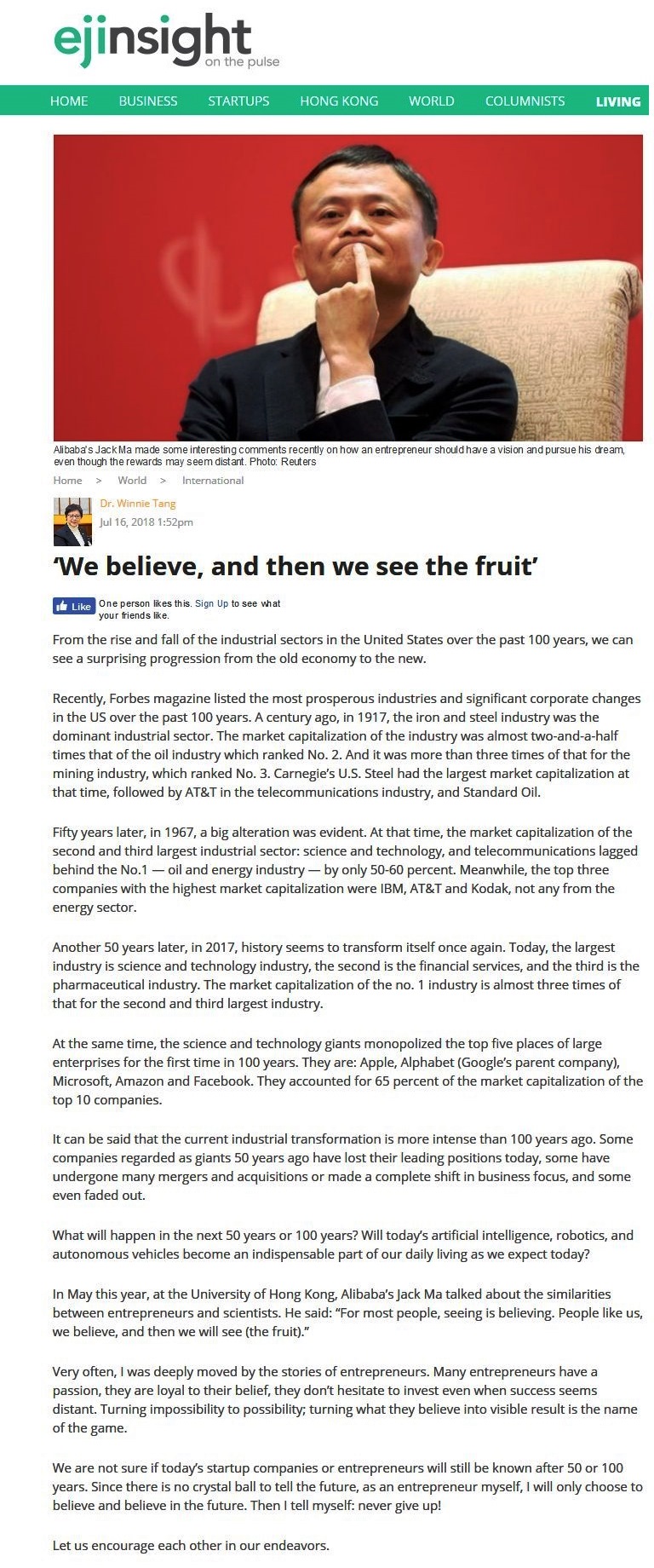網上版請按此

We believe, and then we see the fruit
From the rise and fall of the industrial sectors in the United States over the past 100 years, we can see a surprising progression from the old economy to the new.
Recently, Forbes magazine listed the most prosperous industries and significant corporate changes in the US over the past 100 years. A century ago, in 1917, the iron and steel industry was the dominant industrial sector. The market capitalization of the industry was almost two-and-a-half times that of the oil industry which ranked No. 2. And it was more than three times of that for the mining industry, which ranked No. 3. Carnegie's U.S. Steel had the largest market capitalization at that time, followed by AT&T in the telecommunications industry, and Standard Oil.
Fifty years later, in 1967, a big alteration was evident. At that time, the market capitalization of the second and third largest industrial sector: science and technology, and telecommunications lagged behind the No.1 — oil and energy industry — by only 50-60 percent. Meanwhile, the top three companies with the highest market capitalization were IBM, AT&T and Kodak, not any from the energy sector.
Another 50 years later, in 2017, history seems to transform itself once again. Today, the largest industry is science and technology industry, the second is the financial services, and the third is the pharmaceutical industry. The market capitalization of the no. 1 industry is almost three times of that for the second and third largest industry.
At the same time, the science and technology giants monopolized the top five places of large enterprises for the first time in 100 years. They are: Apple, Alphabet (Google's parent company), Microsoft, Amazon and Facebook. They accounted for 65 percent of the market capitalization of the top 10 companies.
It can be said that the current industrial transformation is more intense than 100 years ago. Some companies regarded as giants 50 years ago have lost their leading positions today, some have undergone many mergers and acquisitions or made a complete shift in business focus, and some even faded out.
What will happen in the next 50 years or 100 years? Will today's artificial intelligence, robotics, and autonomous vehicles become an indispensable part of our daily living as we expect today?
In May this year, at the University of Hong Kong, Alibaba's Jack Ma talked about the similarities between entrepreneurs and scientists. He said: "For most people, seeing is believing. People like us, we believe, and then we will see (the fruit)."
Very often, I was deeply moved by the stories of entrepreneurs. Many entrepreneurs have a passion, they are loyal to their belief, they don't hesitate to invest even when success seems distant. Turning impossibility to possibility; turning what they believe into visible result is the name of the game.
We are not sure if today's startup companies or entrepreneurs will still be known after 50 or 100 years. Since there is no crystal ball to tell the future, as an entrepreneur myself, I will only choose to believe and believe in the future. Then I tell myself: never give up!
Let us encourage each other in our endeavors.
Dr. Winnie Tang
Honorary Professor, Department of Computer Science, The University of Hong Kong